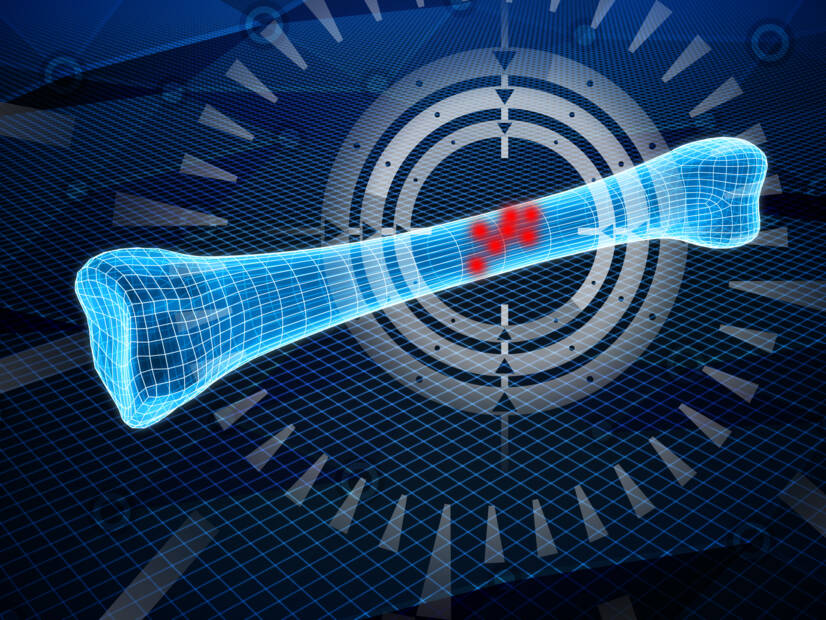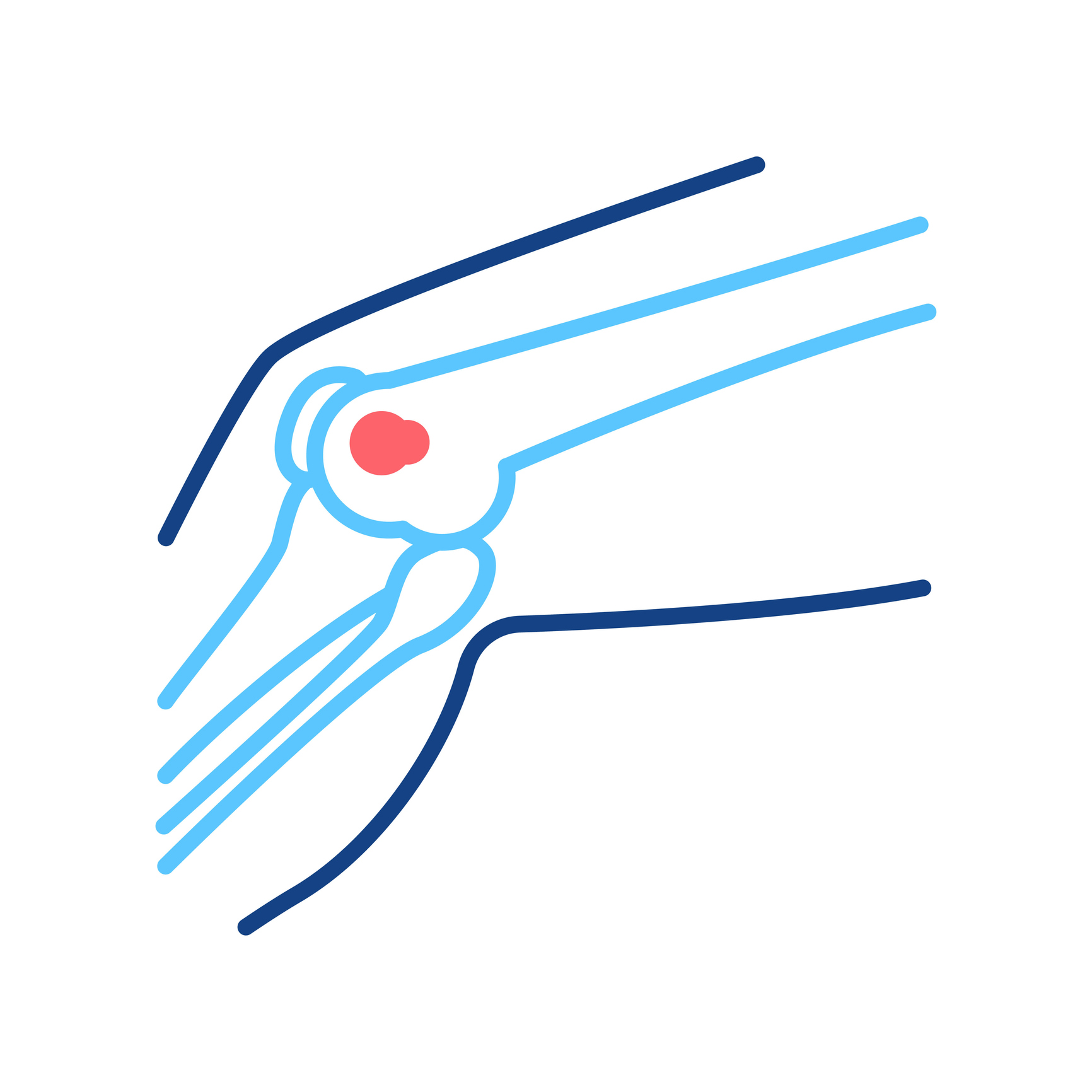- solen.sk - Histopathology of bone tumours
- solen.sk - Orthopaedic surgeon's view on the diagnosis and treatment of bone tumours
- solen.sk - Metastatic skeletal involvement: how to jump hard and how to proceed in the search for a post-primary tumour
- linkos.cz - About bone, joint and cartilage cancers
- solen.cz - Osteosarcoma
- solen.sk - Malignant bone tumours in children
- detskaonkologia.info - Bone tumours
- Anatomy of the human body, Mráz P. et al. 2004.
- Oxford handbook of oncology, Cassidy J. et al, 2015.
- Selected chapters in clinical oncology, Rečková M. et al, 2014.
- Clinical and radiation oncology, Jurga Ľ. et al., 2010.
What is bone cancer and what are its symptoms? + Alarming symptoms

What is bone cancer? What are the manifestations of bone cancer? Which symptoms are alarming? WHEN NOT TO UNDERESTIMATE THE SIGNS IN CHILDREN?
Most common symptoms
- Malaise
- Limb pain
- Back Pain
- Increased body temperature
- Bone Pain
- Sweating
- Indigestion
- Swelling of the limbs
- The Island
- Pathological fracture
- Fatigue
- Reddened skin
Characteristics
Malignant bone tumours (bone cancer) are one of the rarer cancers.
Primary bone tumours (occurring mainly in the bone) account for approximately 0.3% of all malignant bone tumours.
The incidence of bone cancer peaks in adolescence. It has a second smaller peak around the age of 60.
Site predilection, sex predilection and age predilection are helpful in the diagnosis of these tumours.
Determining the behaviour of the tumour (biological nature) is particularly important in oncology.
Histological typing, degree of tissue differentiation (grading) and extent (staging) are the basic parameters to be defined.
The classical tumour staging system TNM (Tumour Nodal Metastasis) has some limitations in bone tumours because sarcomas metastasize less frequently to lymph nodes. Therefore, other classifications are used.
Bones and their role
- protects the soft organs of the human body
- provide firm support
- form the basis for muscle attachments
- ensure the movement of the body
- they are involved in the metabolism of minerals
- they are a reservoir of mobile calcium
- the bone marrow is the site of blood formation
The collection of all the bones is called the skeleton.
Bones without muscles cannot provide active movement, so we call them the passive musculoskeletal system.
Bone division:
- Long bones (humerus, femur, thigh bones, forearm bones, shin bones)
- flat
- short
- irregularly shaped bones
- special types called pneumatic and sesamoid bones
The body of the bone is called the diaphysis and the end part the epiphysis.
Inside the bone is the bone marrow where blood is formed. This process is called hematopoiesis.
Bone is made up of bone tissue. It also contains other tissues - ligaments, cartilage, blood vessels and nerves.
The surface of the bone is covered by what is called the periosteum.
The actual shape and strength of the bone is mainly supported by two types of cells.
Osteoblasts are involved in the formation of bone tissue. Osteoclasts remove excess tissue that has formed and help maintain the necessary shape of the bone.
The skeleton is made up of the so-called axial skeleton and the skeleton of the limbs. The axial skeleton includes the spine, the bones of the chest and the bones of the skull.
The spine consists of 33-34 vertebrae (7 cervical, 12 thoracic, 5 lumbar, 5-6 lumbar and 4-5 coccygeal vertebrae).
The soft tissues are simplistically called non-epithelial (outside the covering tissues) extraskeletal tissues (outside the skeleton).
Characteristics of bone tumours
Bone and soft tissue tumours are a biologically and histologically quite complex group of tumours.
They metastasize predominantly through the blood.
Bone sarcomas are a group of malignant tumours of mesenchymal origin (embryonic tissue from which connective tissue, muscles and blood vessels are formed).
Brief classification of bone and soft tissue tumours
Non-malignant (benign) tumours arising from cartilage include:
- Osteochondroma
- chondroma
- enchondroma
- multiple chondromatosis
- chondroblastoma, etc.
Malignant tumours arising from cartilage:
- chondrosarcoma
Benign tumours forming bone:
- osteoma
- osteoid osteoma
- osteoblastoma
Malignant bone tumors:
- osteosarcoma
Tumors of connective tissue:
- Benign: desmoplastic fibroma
- malignant: fibrosarcoma
Other:
- Fibrohistocytic tumors
- Ewing's sarcoma
- hematopoietic tumors: myeloma, malignant bone lymphoma
- giant cell tumour (osteoclastoma)
- chordoma
- vascular tumours: haemangioma, lymphangioma (benign), angiosarcoma (malignant)
- smooth muscle tumours: leiomyoma (benign), leiomyosarcoma (malignant)
- striated muscle tumours: rhabdomyoma (benign), rhabdomyosarcoma (malignant)
- adipose tissue tumours: lipoma (benign), liposarcoma (malignant)
- tumours of nervous tissue: neurilemoma
- bone metastases
- tumour affections - bone cysts, maldevelopmental findings, e.g. dysplasia, hamartomas
- and others
The most common types of malignant bone tumours include:
- osteosarcoma
- chondrosarcoma
- Ewing's sarcoma of bone
Osteosarcoma
- It is the most common malignant tumour arising from bone tissue.
- It accounts for approximately 5% of all malignancies in children, 15% of extracranial (non-cranial) malignancies in adolescents and 0.2% of malignancies in adults.
- It is mostly found in long bones and approximately 60% of osteosarcomas arise in the knee.
- Osteosarcoma is more likely to occur in an area of the body that has been irradiated.
An increased risk of osteochondroma has been described in some bone diseases, e.g. Paget's disease, multiple hereditary osteochondromas or some cancer syndromes, e.g. retinoblastoma, Li-Fraumeni syndrome, etc.

- It is locally invasive to the bone, invades the surrounding soft tissues and can metastasize to the lungs and other bones.
- Unfortunately, approximately 75% of osteosarcoma cases are only detected at an advanced stage.
- It often manifests itself with night pains and even gait disturbances.
- Sometimes a pathological fracture occurs with minimal trauma and the fracture is also the first symptom.
- In advanced osteosarcoma, we can often detect high levels of alkaline phosphatase and lactate dehydrogenase in the blood
Chondrosarcoma
- It is the second most common malignant bone tumor.
- It is formed by abnormal cartilage cells.
- It represents a tumour of middle to late age.
- It usually manifests as a painful enlarging mass in the pelvis, femur, humerus, ribs.
- The degree of differentiation of the tumour tissue determines the behaviour of the tumour. Unfortunately, approximately 10% of cases eventually transform into poorly differentiated tissue with a poorer prognosis.
- It grows more slowly and metastasises later.
- The symptom is often vague pain, often articular.
Ewing's sarcoma
- This tumour was first described by the pathologist J. Ewing in New York in 1926.
- The highest incidence is between 10 and 20 years of age.
- The cause is unknown and is not associated with a family history of cancer.
- It can affect virtually any bone. Approximately 55% of cases occur in the axial skeleton - the long bones, especially the middle, pelvic and chest bones.
- It can also arise in soft tissues.
- Extraosseous tumours can occur virtually anywhere in the body.
- It is a locally aggressive tumor and occurs predominantly in men.
- Ewing's sarcoma metastasizes early to the lungs, bone marrow and lymph nodes.
Bone metastases
Bone metastases are one of the most common causes of pain in cancer patients.
They are often the cause of their limitations in active normal life and impair quality of life.
Other symptoms include fractures, oppression with neurological symptomatology, ineffective hematopoiesis and disturbances in calcium balance.
Infiltration of malignant tissue leads to bone destruction, called lysis, or bone formation, called osteonogenesis. Accordingly, metastases are differentiated as osteolytic or osteoplastic.
It is not a strict rule that only a certain type of bone metastases can occur in a particular tumour with bone metastases.
In general, even certain types of necessary anticancer treatment can lead to bone demineralization. Thus, bone complications occur.
Bone is one of the most common sites of cancer metastasis - in multiple myeloma, breast, prostate, lung, kidney, thyroid and bladder cancer.
Osteoplastic metastases can occur in some cancers such as prostate, breast, stomach and bladder cancer.
Bone cells osteoblasts promote factors that stimulate the formation of cancellous bone. Its mineralization can lead to hypocalcemia - reduced calcium levels.
Osteolytic metastasis and may occur in renal cell carcinoma, thyroid cancer and plasmacytoma. Tumour cells release factors that subsequently break down bone tissue. They are activated by so-called osteoclasts.
Calcium levels may therefore be elevated and we find hypercalcaemia.
If no primary tumour is found or if it is not technically possible to take a histological sample directly from the bone metastasis, a histological sample is taken.
Causes
The exact aetiology of bone tumours is not precisely known.
Chronic stress of the organism by chemical influences, radiation, carcinogens, oncoviruses, which influence malignant transformation of musculoskeletal cells, may play a role.
Early detection of this diagnosis can save a life. If the patient develops pathological fractures or distressing manifestations of spinal cancer, the findings are indicative of a more advanced stage.
Pathological bone fractures (humerus, femur, vertebral bodies, vertebral arches) bring some of the worst pain. Rapid surgery with bone stabilization is necessary.
Unfortunately, the compression of the spinal cord by the fragments of the collapsed vertebra remains irreversible in most cases. The patient's mobility is limited. The patient is completely bedridden and wheelchair bound. The patient is dependent on the help of another person from that point on.
Symptoms
The patient's symptoms depend on the size and location of the tumor.
- pain (especially at night, the patient often wakes up because of significant pain)
- swelling
- redness, tenderness of soft tissues in the area
- limitation of mobility, gait disturbance, lameness
- pathological fracture
- general symptoms weakness, malaise, fatigue, weight loss
- symptoms associated with the presence of distant metastases, e.g. pulmonary metastases cough, breathing difficulties
- in Ewing's tumour, pain may be caused by axial pressure on abdominal organs, nerves, urinary tract and about 10 % of patients may have fever, hot swollen limbs, often mimicking inflammation, so called osteomyelitis
Alarming symptom: nocturnal pain, pain that does not subside with conventional analgesics (painkillers).
DO NOT UNDERESTIMATE THE SYMPTOMS IN CHILDREN!
- In the early stages, they may resemble symptoms of other less serious diseases, especially in sports, excessive activity of children, injuries. Examination by a doctor is often delayed.
- Pain and swelling in the patient as the first symptoms are long overlooked and not given due attention. Sometimes a long time elapses before the young patient gets an imaging examination. This worsens the prognosis.
- Do not forget the child's history of injury, complaining of recurrent pain or even unremitting pain, especially at night.
- PERIOD OF GROWTH SPURT! Growth acceleration occurs during this period. In girls it is around the age of 13 and in boys at the age of 15-17. This suggests some possible interaction between rapid bone growth and malignant transformation.
- In some clinical studies, epidemiological data have reported that patients with osteosarcoma are higher.
Back pain
Approximately 80% of people will experience back pain during their lifetime.

Never underestimate long-term pain! Are you sure you know the cause?
What are the warning signs of back pain?
- The problem does not subside, but worsens.
- Pain radiates and worsens, possibly to the point of loss of feeling
- Difficulty urinating or even inability to urinate
- Difficulty emptying stools
- Pain that does not respond to medication
- Age under 17 or over 50
- Use of corticosteroids
- Constant pain that does not subside at rest or at night
- Unwanted weight loss, lack of appetite, fatigue
- Positive family history of cancer
- Fevers, high inflammatory parameters
- Intravenous drug use
- Trauma, even minor trauma in the elderly
Diagnostics
The patient's first point of contact within the healthcare system - the adult general practitioner or paediatrician - has an indispensable place for early diagnosis.
Taking a detailed history, an accurate description of the difficulties, finding out any positive family history of tumors, excessive regular overloading of the musculoskeletal system at work, a history of injury, weakening of the immune system, symptoms of systemic disease, etc., these are the pillars of the conversation with the doctor.
Clinical examination of the patient, assessment of local findings, mobility, pain and general condition of the patient.
This is followed by an examination by a specialist - an orthopaedic surgeon. Sometimes the patient also undergoes an additional neurological examination.
In addition to basic blood and biochemical parameters, oncomarkers (alkaline phosphatase, lactate dehydrogenase, thymidine kinase, beta-2-microglobulin) may be useful in the laboratory examination.
This does not mean that every patient with malignancy has elevated oncomarker values.
It is not true that all oncomarkers must be taken in every tumor. This depends on the type of tumor and is usually indicated by the oncologist.
Myth: Take my oncomarker, rule out cancer...
Imaging methods used in diagnosis include X-ray, CT (computed tomography), MRI (magnetic resonance imaging), whole-body bone scintigraphy and PET-CT (positron emission tomography).
USG (ultrasound) helps to examine the soft tissues of the musculoskeletal system.
Cooperation between medical disciplines and centralisation of patients is particularly important and necessary.
Often in practice, we encounter in bone cancer that it is very difficult to determine the exact type of tumour.
Abnormal tumour tissue cells are sometimes poorly differentiated, especially when multiple tissue types are present. Histopathological assessment is thus very difficult.
In these cases, the patient's biopsy samples are sent to the above-mentioned centres, which are infinitely more experienced in this field.
It is very important that the time window for histological assessment is not too long.
The patient can be informed of the results and the next steps at the catchment centre where the sample was originally sent.
It is of course important to remember that a thorough histological examination, various specific tests (immunohistochemical, molecular genetic) take their inevitable time. It is difficult to obtain a definitive finding, especially in bone cancer, a few days after surgery.
Forecast
The prognosis usually depends on the stage of the cancer diagnosed and the patient's overall clinical condition.
Early diagnosis improves prognosis, prolongs overall survival and may even save a life.
With complete surgical removal of the tumour, the likelihood of cure is high.
It is essential that patients are monitored for a long time after treatment.
The most common sequelae to monitor include heart and lung problems, hearing loss, growth retardation, changes in sexual development and ability to have children, learning problems (in younger children) and the development of secondary malignancies.
How it is treated: Bone cancer
Bone cancer treatment: surgery, radiotherapy and chemotherapy, drugs
Show moreBone cancer is treated by
Other names
Interesting resources










